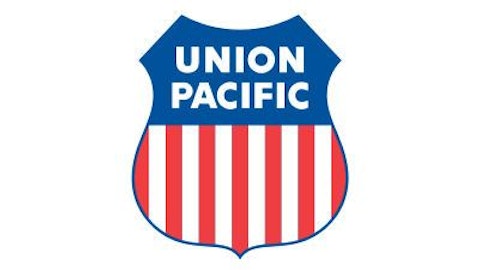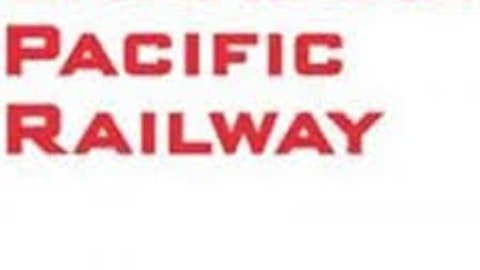The United States is pumping out more crude oil than the country’s pipelines can carry. The risk associated with oil drilling in the United States has disappeared, as a result of innovative technologies such as hydraulic fracking. The days of U.S. oil companies scouring the world for pools of reachable crude oil are over. Equipped with technologies such as fracking, the US oil industry has flourished and volumes are surging.

Early this year, US oil production reached 7 million barrels per day for the first time since 1993. By 2020, analyst projections expect production to hit 10 million barrels per day. This amount of production is simply more than the country’s current pipelines can handle, allowing railroads to step in to transport the overflow of oil to refineries.
Cheaper oil, more expensive transport
According to Credit Suisse, originations of crude oil shipments by rail grew 200% just last year. Many analysts classify this as surprising, as rails are vastly more expensive than pipelines. The transportation of a barrel of crude from the oil hub of Hardisty in Alberta, Canada to the US Gulf Coast, for example, costs $7 to $11 per barrel by means of pipeline, however costs $14 to $21 per barrel by railway, based on research done by BMO Capital Markets. However, the excess US production has resulted in domestic oil being priced at a discount to imported foreign oil, represented in the spread between West Texas Intermediate ($96.56 a barrel) and Brent crude ($102.16 a barrel). The spread between the two has been as high as $20 this year. Therefore, refineries are more than happy to pay the extra capital to transport WTI by train to receive the substantial discount compared to the Brent when the spread is large.
The lack of pricing power rails possess is compensated by their vast availability compared to pipelines. Environmental setbacks and years of construction make pipelines a far-out reality for several locations that require additional transportation systems immediately. While in stark contrast, railroads already stripe the United States, and do not arouse such harsh criticism from environmentalists.
Where can investors look?
Railroads and related companies positioned to benefit from this trend include Canadian Pacific Railway Limited (USA) (NYSE:CP), Union Pacific Corporation (NYSE:UNP), Berkshire Hathaway Inc. (NYSE:BRK.A)-B), Kansas City Southern (NYSE:KSU) , and CSX Corporation (NYSE:CSX) .
6% of Canadian Pacific Railway Limited (USA) (NYSE:CP)’s earnings this year is forecasted to come from oil shipments, according to BMO. The company is positioned so that it can originate oil shipments from the Bakken shale and Canada’s oil sands. Despite the fact that the rail’s share of the Bakken shale is projected to peak in late 2014 as new pipelines are brought on line, pipeline capacity will not grow until 2015, at the earliest. Moreover, the oil sands of Canada generate thick bitumen, which has to be diluted to flow through pipelines, and then undiluted at the refineries, an additional step not required in rail shipments. EPS for the company is anticipated to rise to $9.20 per share by 2015, up substantially from 2012’s EPS of $2.80 per share, compensating for the current price-to-earnings ratio of 39.78.
Three percent (3%) of Union Pacific Corporation (NYSE:UNP)’s earnings this year is expected to come from oil shipments, according to BMO. Union Pacific Corporation (NYSE:UNP) possesses exposure to the Bakken shale and Canada, with connections to key refineries in Texas and Louisiana. Furthermore, the company originates shipments from the Niobrara shale field, which is less developed than the Bakken, however is projected to sprout up over the next 5-7 years. EPS for the company is expected to grow consistently from 2012’s level of $8.30 per share to the projected $12.10 by 2015. The price-to-earnings ratio of Union Pacific Corporation (NYSE:UNP) is 18.11, representing a fairly priced company.
Berkshire Hathaway Inc. (NYSE:BRK.A)’s railroad holding, BNSF, is projected to currently have one of the largest exposures to the Bakken shale, controlling 82% of capacity for oil. However, the rail’s share of the Bakken is projected to peak in late 2014 as new pipelines are brought on line. In terms of revenue, BNSF only accounts for 12.82% of the overall company, as Berkshire Hathaway Inc. (NYSE:BRK.A) is highly diversified. Earnings for the overall company are expected to grow 5.88% from 2012 to 2014, and with a price-to-earnings ratio of 16.88, Berkshire Hathaway Inc. (NYSE:BRK.A) appears reasonably priced.
Kansas City Southern (NYSE:KSU) owns land near major refineries in Port Arthur, Texas, and is currently ironing out a deal to turn this land into a key terminal for northern crude, which could boost earnings by as much as $1 by 2015. Earnings for the company are expected to rise from $3.40 per share in 2012 to $6.10 per share by 2015, more than compensating for the price-to-earnings ratio of 28.76 the company presently carries.
CSX Corporation (NYSE:CSX) possesses significant exposure to eastern shale fields such as Utica and Marcellus, as well as the Bakken and Canada oil sands. Earnings generated by the company are projected to grow from $1.80 per share achieved in 2012 to $2.30 per share by 2015. At the moment, CSX Corporation (NYSE:CSX) carries the lowest price-to-earnings ratio in the pack, 12.83.
What are some factors that could reverse this trend? For one, a drop in oil prices could lead to US drillers cutting back on production, which would lead to a deterioration in the surplus of US oil, and in turn lessen the spread between WTI and Brent crude, making it no longer sensible for refineries to pay the premium fee associated with rails.
Moreover, a more widespread slowdown in the United States economy would lead to decreased shipment volumes of all products, as is expected.
The Foolish bottom line
The United States currently produces more oil than our pipelines can handle. Despite the fact that pipeline companies are tirelessly attempting to establish additional pipelines in fields across the United States, several years are required for construction, which is on top of strict environmental scrutiny. As long as the spread between WTI and Brent crude remains large, refineries will turn to the rails to transport the excess oil, presenting significant opportunity for the railroad companies to meet rising demand in a lucrative venture. The five companies covered possess exposure to potential growth derived from this market condition, and should benefit from this fundamental trend in the American economy.
Ryan Guenette has no position in any stocks mentioned. The Motley Fool recommends Berkshire Hathaway. The Motley Fool owns shares of Berkshire Hathaway. Ryan is a member of The Motley Fool Blog Network — entries represent the personal opinion of the blogger and are not formally edited.
The article All Aboard the Rails in Search of Black Gold? originally appeared on Fool.com is written by Ryan Guenette.
Copyright © 1995 – 2013 The Motley Fool, LLC. All rights reserved. The Motley Fool has a disclosure policy.





